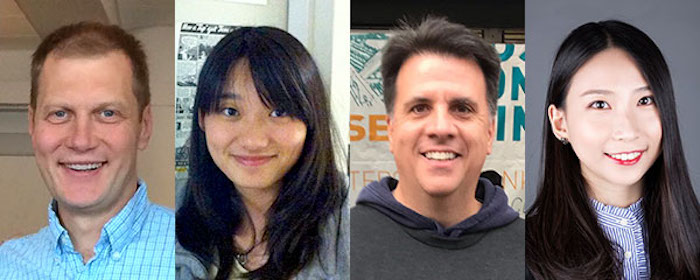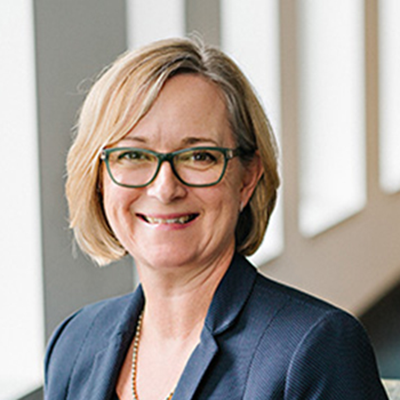Impinjineers Share How Teamwork Powers Product Development
A conversation with members of the team who brought the Impinj M700 series tag chips to market
Taking a product from idea to fruition is among the most exciting and satisfying personal and professional experiences. Recently, I had the opportunity to talk with a few of our Impinj team members (around the office, we say “Impinjineers”) who worked on the Impinj M700 series of tag chip products and to hear first-hand about their experience working with their teams, our partners, and global suppliers.

Pictured From left to right:Pavel Nikitin, Shanshan Dai, Steve Berry, and Jing Yao
In the second quarter, we achieved our final product development milestone with the Impinj M730 and M750 tag chips moving to general availability. These tag chips are next-generation, universal RAIN RFID tags that can be attached to, or embedded in, nearly any item, and operate worldwide.
Here are highlights from my conversations with Impinjineers Pavel Nikitin, senior staff antenna designer on the engineering team; Shanshan Dai, senior analog design engineer; Steve Berry, director product management for silicon products; and Jing Yao, staff process integration engineer.
Pavel, I understand you work in our antenna engineering group, can you tell me a little about what your team does?
We really do anything and everything related to tag antennas. One of the things our team does is to develop antenna reference designs for Impinj tag chips. As part of design, we analyze tag performance such as sensitivity and backscatter to support tag chip engineering. We also look at how antenna design supports meeting performance goals or standards such as the ARC Program at the Auburn University RFID Lab.
Tell me about what it was like working with the team on the Impinj M700 series tag chip project?
One of the things I discovered when I joined the company is how complicated an endeavor it is to design a RAIN RFID tag chip! The Impinj engineering team is full of super smart people who are broadly educated in engineering. I learned very quickly that there are people on the chip design team that know more about S-parameters than I do. What I really liked is that everyone is really friendly. No matter how busy they are, if I had a question they would always find time to work with me. Our antenna group responds in the same way. We work closely with the chip designers to answer questions about how their designs would work on a tag. And we ran an extensive analysis looking at how antenna design will optimize the tag performance using Impinj M700 tag chips. Our little corner of the office, now a virtual office, was filled with technical discussions that might last for hours and were very fruitful. Everyone at Impinj has a unique sense of humor. So, in addition to serious discussions about technology, we were able to fit in a joke or talk about something that brightens our day.
I promise, you know more about S-parameters than I do! It sounds like the antenna design team and the tag chip design team learn a lot from each other. Do you get the opportunity to share your insights outside of Impinj?
Recently, my colleagues John Kim, KVS Rao, and I presented a paper at an IEEE conference on antennas, RFID Tag Antenna Design for ARC Specs. We wrote the paper to share our product development experience with the academic tag and antenna design community, and to show how the combination of chip performance and antenna performance is key to meeting quality certification requirements such as ARC. We wanted to make it easier for our tagging partners to understand how to design antennas that will meet or exceed requirements set out by customers or organizations like ARC.
Shanshan, I understand that you joined the engineering team recently after graduating from college, with the Impinj M700 project well underway. What was it like coming to Impinj and joining this team?
I feel so lucky to be on this team! Joining Impinj in the middle of Impinj M700 was like diving into the deep end, but everyone in the team helped me to swim to shore. The senior engineers and the leadership team worked directly with me on the design; they know the history and took time to help me catch up. It let me quickly learn on the job, and gain the confidence to suggest changes and introduce new ideas. I’m very grateful for the support and feedback I received on every proposed change, iterating on the design. Also, the test team is amazing. Whenever the design team had questions about how something would work in reality, the test team immediately delivered data to compare with the simulation. Helping to deliver a complex project such as Impinj M700, especially as a new graduate, is something I’d never imagined, but it’s only possible with a team so willing to help each other.
In addition to this being your first job, there was the unexpected hurdle of having to work remotely due to the impact of COVID-19. How did that go?
Before we moved to work from home, we were already used to working with remote people because on our design team, not everyone works in the same office. The increased use of video meetings while working from home has actually made getting together with the team easier than before. For the broader team, I could feel how everyone was helping stay connected and kept our focus on our work. Only a few people were allowed to visit the lab in-person. Those that did go into the lab were generous with their time to help with areas that might not have been their usual roles.
Steve, turning to you, you’re on the product management team focused on our silicon products. I think most people don’t understand the process of industrializing a new tag chip within an ecosystem of tagging partners. Can you tell me a little bit about what it was like working with our partners to bring the Impinj M700 to market?
We always work closely with our tagging partners. But because the Impinj M700 is such a significant leap forward in tag chip technology, we knew that we needed to collaborate even closer so that partners could gain the benefits of the smaller chip size and increased performance. The Impinj M700 tag chips bring forward the greatest set of innovations in a single tag chip product that the market has seen in a long time. It’s not just that the size of the chip, also known as the die size, is smaller. There are four times as many chips on each wafer compared to the Impinj Monza R6. With everything that is new about this chip, the deep engagements with our partners were tremendously beneficial in helping us and ultimately our customers deliver great products to the market.
How did this close relationship with our partners help?
Our inlay partners agreed to assemble inlays with early versions of our chip design and give us feedback on the manufacturability, performance and quality. One of our early steps was to provide a mechanical wafer to our partners. This is a test wafer that has non-functional dies to use on an inlay machine to test whether it could accurately place these small dies onto an inlay. We learned a lot from this process. The early collaboration was vital to the successful launch of the Impinj M700 series tag chips. Our partners gave us a lot of early feedback on the inlay assembly process, in-line performance testing, offline performance testing, and mechanical testing. We also worked closely with Mühlbauer, a manufacturer of inlay assembly and converting machines. Each issue we addressed and solved together was one more nugget that led to the success of the project.
Jing, I know that your team was very involved in establishing the manufacturability of the Impinj M700 tag chips. Can you tell me more about your team and your focus during new product development?
Our team is focused on quality and yield of tag chip manufacturing, as well as long-term improvements to our processes. When Impinj is developing new products, our main focus is to develop process flow and critical process conditions. We work with our suppliers, located in several countries across multiple time zones, to get their feedback on our requirements and to facilitate getting early product versions into the hands of Impinj partners for testing. Early and close involvement by our global suppliers is so important, because we integrate their feedback and suggestions into our designs.
And then the Coronavirus hit, first in Asia where many of our suppliers are located and then across the globe.
Yes! The surprise during the Impinj M700 development was, of course, the coronavirus and its impact on the daily lives of our global suppliers. However, the positive surprise was how well our suppliers responded and continued to help with our product development cycle. They delivered the insightful feedback and quick decisions that we needed, plus enabled us to get diced wafers into the hands of our partners. I was so impressed with how responsive, flexible, and collaborative all of our suppliers were throughout the Impinj M700 product development cycle, especially when COVID-19 started impacting manufacturing facilities and business offices. One example is our partners at TSMC (Taiwan Semiconductor Manufacturing Company). They were amazing in listening to our needs, helping us with continuous improvement, and were able to support manufacturing while safely working with changing health guidelines.
Thank you Pavel, Shanshan, Steve, and Jing for taking the time to talk with me. It is so inspirational to hear the stories about how Impinjineers, partners and suppliers worked closely together to bring the Impinj M700 series tag chips to market. Especially with a product development cycle that overlapped with a global pandemic. I love the tips you shared, such as being flexible about communication tools and time zones. I’ve learned so much from each of you.
- Article tagged as:
Thursday, August 6, 2020
ABOUT THE AUTHOR

Gaylene Meyer
Impinj Vice President of Global Marketing and Communications
Gaylene Meyer leads a team focused on delivering world-class marketing and communications that engage partners and customers worldwide.
Sign Up for the latest news
